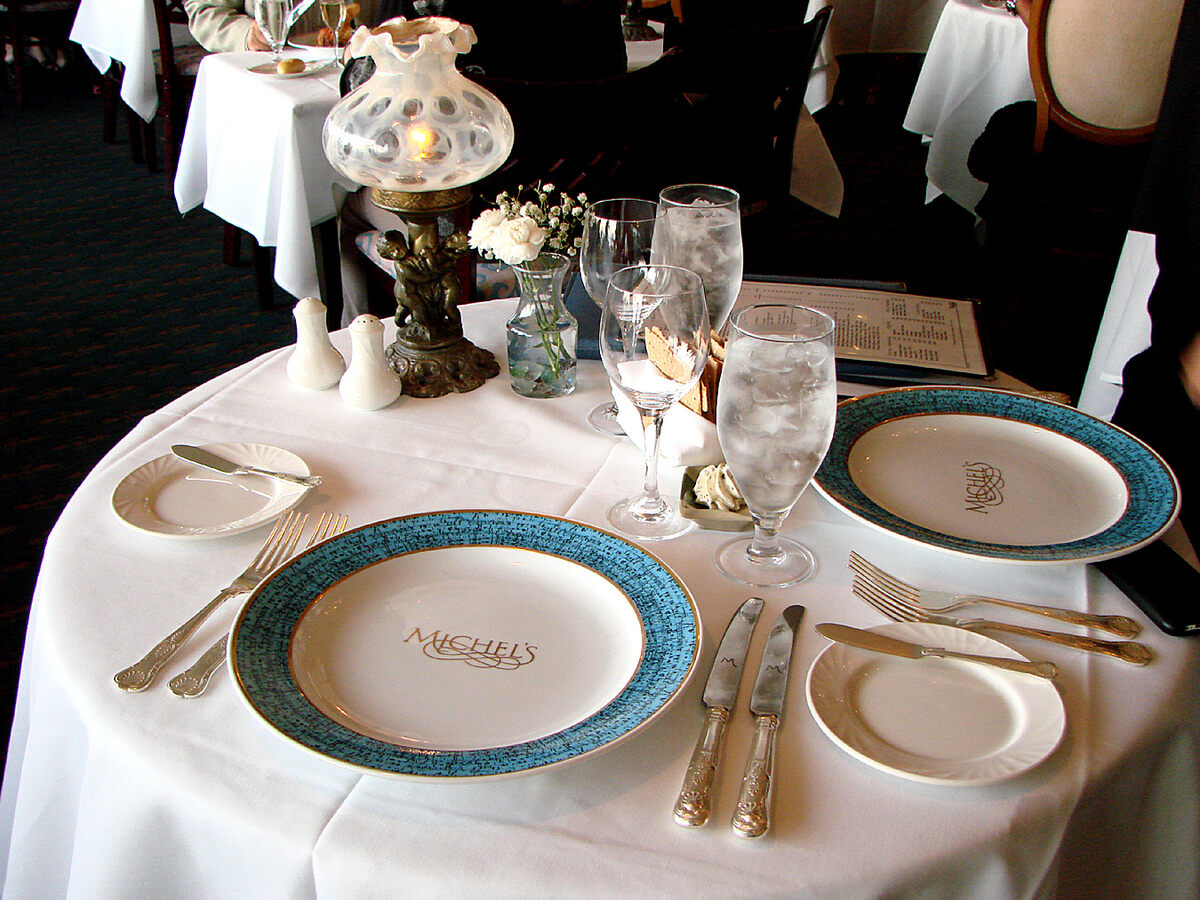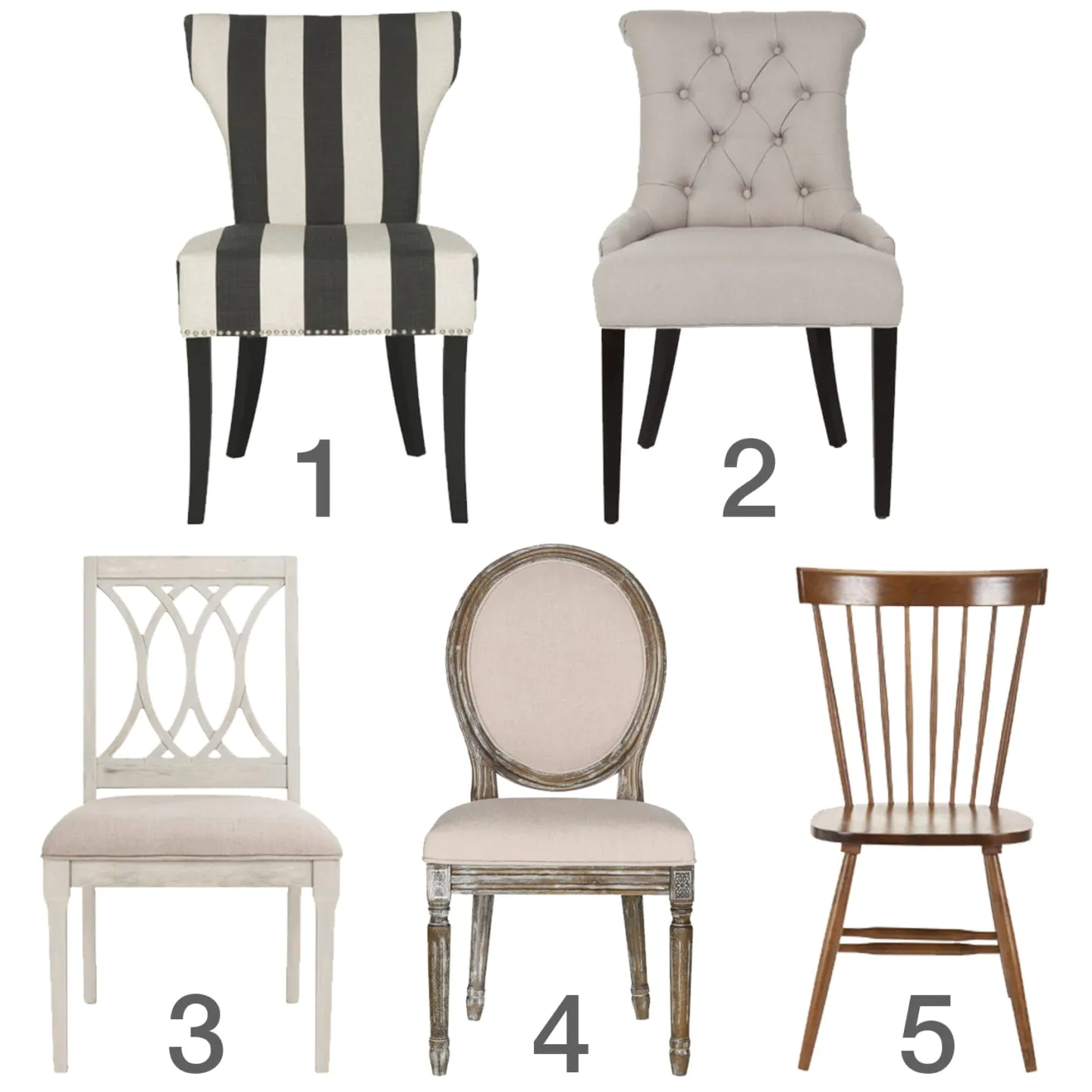Home>Dining>Table Decor>What Are The Different Table Service Styles?


Table Decor
What Are The Different Table Service Styles?
Modified: December 7, 2023
Discover the various table service styles and elevate your dining experience with our expert tips on table decor. From formal to casual, find the perfect ambiance for your next meal.
(Many of the links in this article redirect to a specific reviewed product. Your purchase of these products through affiliate links helps to generate commission for Storables.com, at no extra cost. Learn more)
Introduction
When it comes to dining experiences, one important factor that can greatly impact the overall experience is the style of table service. Table service refers to the way food and beverages are served to guests at a restaurant or an event. Each style of table service has its own unique characteristics, which can create different atmospheres and cater to different preferences.
In this article, we will explore the different types of table service styles commonly used in the hospitality industry. Whether you’re a restaurant owner, a party planner, or simply curious about different dining etiquette, this guide will provide you with a comprehensive overview.
From the convenience of buffet-style dining to the elegance of plated service, each style offers its own advantages and brings its own charm to the table. Understanding the differences between these styles will not only help you make informed choices as a host but also allow you to appreciate the artistry and precision that goes into each approach.
So, join us as we embark on a journey through the world of table service, exploring the intricacies and nuances of each style. Whether you’re interested in hosting a formal dinner party or simply want to gain insights into the fascinating world of hospitality, this article is for you.
Key Takeaways:
- Embrace the diversity of table service styles, from the interactive and social buffet style to the refined elegance of plated service, each offering a unique dining experience tailored to different occasions and preferences.
- The artistry and precision of table service styles, whether it’s the warmth of family-style dining or the grandeur of Russian and French service, elevate the dining experience, creating lasting memories and strengthening connections.
Read more: What Are The Different Styles Of Table Legs?
Buffet Style
Buffet-style table service is a popular choice for large gatherings, events, and casual dining experiences. It offers guests the freedom to choose from a wide variety of dishes displayed on a self-serve table or station. The buffet setup typically includes an assortment of appetizers, main courses, side dishes, salads, and desserts.
One of the main advantages of buffet-style service is the flexibility it offers to guests. They can select the quantities and combinations of items that suit their preferences, and even go back for seconds if desired. This style also promotes social interaction, as guests can mingle and move around the buffet area while choosing their food.
From a host’s perspective, buffet-style service can be more cost-effective and efficient for large groups. It eliminates the need for a large number of servers, as guests can help themselves. It also allows for easy customization, as dietary restrictions and preferences can be accommodated with a variety of dishes available.
When setting up a buffet, it’s essential to consider the flow of traffic to ensure a smooth dining experience. Start with appetizers and salads at one end, followed by main courses and side dishes, and end with desserts. Proper signage and labeling can help guests navigate the buffet with ease.
To maintain the quality and freshness of food, it’s important to replenish dishes regularly and keep them at the appropriate temperature. Additionally, maintaining a clean and presentable buffet area throughout the event is crucial to create a positive impression.
Buffet-style service can be adapted to various themes and occasions, making it a versatile choice for both casual and formal settings. Whether it’s a corporate event, wedding reception, or holiday party, buffet-style service allows guests to have a wide selection of food options while promoting a relaxed and interactive dining experience.
Family Style
Family-style table service is a dining experience that aims to create a sense of warmth, togetherness, and shared meals. This style emulates the feeling of dining at home, where platters and bowls of food are placed on the table, and guests help themselves to the dishes.
With family-style service, the food is often served in large bowls or platters and passed around the table for guests to serve themselves. This encourages interaction among guests as they engage in conversation while passing the dishes. It also promotes a sense of community and fosters connections among the diners.
Family-style service is commonly used in restaurants and private gatherings, especially for celebrations or special occasions. It provides a more intimate and relaxed atmosphere, where guests can enjoy a shared dining experience and savor a variety of dishes.
The key to successful family-style dining is the selection and arrangement of dishes. It is important to offer a balanced variety of appetizers, main courses, side dishes, and desserts that cater to different tastes and dietary preferences. Consider including vegetarian or vegan options, as well as accommodating any dietary restrictions or allergies of the guests.
When setting up the table, make sure there is enough space for the serving dishes and that they are easily accessible to all guests. Use appropriately sized platters and bowls that can be passed around comfortably. Consider providing serving utensils for each dish to ensure hygienic handling.
Communication is vital during family-style dining. Encourage guests to serve themselves in moderation to ensure that everyone gets a fair share of each dish. If certain dishes are limited in quantity, inform the guests beforehand or have additional servings ready to replenish as needed.
Family-style dining offers a warm and inclusive dining experience, encouraging guests to bond over delicious food and good conversation. It provides a unique opportunity to create lasting memories and strengthen relationships, making it an excellent choice for gatherings of family and friends.
Plated Service
Plated service, also known as formal or sit-down service, is a dining style commonly seen in fine dining restaurants and upscale events. In this traditional service style, individual portions of food are meticulously plated in the kitchen and then served to each guest at the table.
Plated service offers an elevated dining experience, where each plate is carefully arranged with precision and attention to detail. It allows for consistency in portion sizes and presentation while showcasing the culinary expertise of the chef.
One of the advantages of plated service is the convenience and ease it provides to guests. They can relax at the table and have their food served to them, eliminating the need to navigate through a buffet or pass dishes around. It also ensures that each guest receives the same quality and presentation of the dish.
When planning a plated service, it’s essential to design a well-thought-out menu that balances flavors and textures. Courses are typically pre-determined, consisting of an appetizer, soup or salad, main course, and dessert. Guests may have the option to choose from a limited selection of dishes for each course in advance or on the spot.
Timing is crucial in plated service, as the courses are served one after another. The staff needs to coordinate effectively to ensure that each course is served promptly and with precision. Clear communication between the kitchen and the dining area is essential to ensure a seamless dining experience.
The presentation of the plated dishes is of utmost importance in this style of service. The visual appeal of the food enhances the overall experience for the guests. Attention should be paid to the arrangement of the components on the plate, the garnishes used, and the overall aesthetics.
Plated service offers an elegant and refined dining experience, suitable for formal occasions such as weddings, galas, and business dinners. It creates an atmosphere of sophistication and allows guests to savor each course without any distractions, making it a preferred choice for those seeking a special and memorable dining experience.
Russian Service
Russian service is an elaborate and formal style of table service that originated in Russia during the 19th century. It is often associated with high-end, luxurious dining experiences and is characterized by its grandeur and attention to detail.
In Russian service, the staff, known as “service à la russe,” play a significant role in the presentation and serving of food. The meal is typically served in several courses, with each course brought to the table on large silver trays. The server then plates the food individually for each guest at the table.
This style of service requires highly skilled and trained staff who possess excellent tableside manners. The servers showcase their expertise by executing precise and synchronized movements while attending to the guests. The artistry and elegance displayed in Russian service make it a truly memorable and immersive dining experience.
One of the distinguishing features of Russian service is the use of small side tables, known as “guéridons,” which are brought to the table. The guéridons are equipped with burners to keep the dishes warm and provide a personalized touch as the server prepares and plates the food in front of the guests. This interactive element adds a sense of theater to the dining experience.
Timing is crucial in Russian service, as the courses are served sequentially and require precise coordination by the server and the kitchen. Each dish is served and cleared with precision, offering a seamless progression of courses.
Due to its complexity and attention to detail, Russian service is usually reserved for special occasions, fine dining establishments, or private events where an exquisite and luxurious experience is desired. It combines culinary artistry, elegance, and gracious hospitality to create an unforgettable dining experience for guests.
While Russian service may be a less common style in modern times, its legacy continues to attract those who appreciate the sophistication and opulence of classic dining traditions.
When dining out, familiarize yourself with different table service styles such as French, Russian, and American. This will help you understand the level of formality and service you can expect at different restaurants.
French Service
French service, also known as “service à la française,” is an intricate and formal style of table service that originated in France during the 17th century. It is characterized by its elegance, attention to detail, and the high level of interaction between the servers and guests.
In French service, the entire meal is brought to the table on a large cart, known as “chariot.” The server then presents each dish to the guests individually, explaining the ingredients and preparation methods. The guests can make their selection, and the server plates the chosen items in front of them.
This style of service requires highly skilled and trained staff who possess extensive knowledge about the dishes being served. The server’s expertise in presenting the food and providing information about the ingredients and flavors adds an educational and immersive element to the dining experience.
French service places a strong emphasis on tableside preparation and presentation, creating an engaging and interactive atmosphere for the guests. It allows for customization and flexibility as guests can choose their preferred portion sizes and accompaniments.
Timing is crucial in French service, as the various dishes are brought to the table and served in a sequential manner. The server must maintain a seamless flow and attend to each guest’s needs, ensuring that everyone’s dining experience progresses smoothly.
French service is often associated with high-end restaurants and fine dining establishments that prioritize impeccable service and attention to detail. It offers an elevated and personalized dining experience, appealing to those who appreciate the artistry and refinement of French gastronomy.
While French service may require additional staff and coordination, it creates a memorable dining experience that showcases the sophistication and culinary expertise of the establishment.
Whether it’s a special occasion or a desire to indulge in a truly exquisite dining experience, French service continues to captivate diners with its elegance and personalized touch.
American Service
American service, also known as “plate service,” is a casual and straightforward style of table service commonly seen in American diners, cafes, and casual restaurants. It reflects the relaxed and informal dining culture in the United States.
In American service, the food is prepared and plated in the kitchen by the kitchen staff before being brought to the table. The plated dishes are then served directly to the guests individually by the waitstaff. This style of service offers convenience and efficiency, as guests can focus on enjoying their meal without the need for self-service or tableside preparations.
Unlike more formal styles of service, American service does not involve elaborate presentations or tableside actions. It is a no-frills approach that emphasizes timely and efficient delivery of the dishes to the guests. The focus is on providing a satisfying dining experience with minimal interruptions.
One characteristic of American service is the flexibility it allows for customization. Guests can make specific requests or modifications to their orders, such as substituting ingredients or requesting certain cooking preferences. The waitstaff is generally accommodating and responsive to these requests, ensuring that guests can tailor their dining experience to their liking.
American service is often seen in fast casual restaurants, where speed and convenience are key considerations. The emphasis is on efficiency, with staff members working together to ensure that food is delivered promptly and accurately.
While American service may lack the formalities and grandeur of other table service styles, it has a charm of its own. It provides a relaxed and hassle-free dining experience, catering to those seeking a no-fuss meal without compromising on quality or taste.
Whether it’s grabbing a quick lunch during a busy workday or enjoying a casual dinner with friends, American service offers a familiar and comfortable dining experience that aligns with the laid-back American dining culture.
English Service
English service, also known as “butler service,” is a formal and prestigious style of table service that dates back to the Victorian era in England. It is characterized by its elegance, attention to detail, and high level of personalized service.
In English service, the meal is prepared and plated in the kitchen by the kitchen staff. The plated dishes are then presented to the guests individually by a highly trained and skilled butler or server. The server moves around the table, offering each dish to the guests and removing empty plates discreetly.
This style of service places a strong emphasis on graciousness and hospitality. The server exudes professionalism and attentiveness, ensuring that each guest’s needs are anticipated and met. The butler may also provide recommendations or descriptions of the dishes being served, enhancing the overall dining experience.
English service is characterized by its precision and attention to detail. The server uses specialized serving implements and techniques, such as silver service, to ensure that each guest is served with finesse. This includes the proper handling of utensils, the use of specific serving spoons or tongs, and the artful garnishing of dishes.
Timing is crucial in English service, as the server must navigate the table seamlessly, offering and clearing dishes with precision and discretion. The goal is to create a relaxed and uninterrupted dining experience for the guests, showcasing the epitome of attentive service.
While English service is more commonly seen in upscale restaurants, luxury hotels, and private events, it continues to captivate diners seeking a truly refined and indulgent dining experience. It is a style that pays homage to the traditions of fine dining, combining elegance, sophistication, and the highest level of service.
With its rich history and legacy, English service offers a glimpse into the grandeur and opulence of a bygone era. It is a dining experience that celebrates the art of impeccable service and creates lasting memories for those fortunate enough to partake in it.
Conclusion
Table service styles play a significant role in shaping the dining experience, be it in a restaurant, at a special event, or even in the comfort of our own homes. Each style offers its own unique charm, atmosphere, and approach to serving food and beverages.
From the freedom and variety of buffet-style service to the elegance and attention to detail in plated service, there is a table service style to suit every occasion and preference. Family style brings a sense of togetherness and shared meals, while Russian service and French service showcase grandeur and the artistry of presentation. American service offers a casual and efficient approach, while English service exudes elegance and personalized attention.
Choosing the right table service style depends on various factors, such as the type of event, the desired atmosphere, and the preferences of the guests. It’s essential to consider the goals and expectations of the gathering to ensure a memorable dining experience.
Regardless of the style chosen, proper execution is vital. Attention to detail, the expertise of the servers, and efficient communication between the kitchen and the dining area are key to a successful dining experience.
As hosts or guests, it is valuable to appreciate the intricacies and nuances of each table service style. Understanding the artistry and thoughtfulness that goes into the presentation and service of food can enhance our appreciation for the culinary world and heighten our enjoyment of the dining experience.
So, whether you find yourself indulging in the variety of a buffet, savoring the sophistication of a plated meal, or being immersed in an interactive service style, embrace the moment and relish the pleasure that comes from the combination of good food, exceptional service, and enjoyable company.
Ultimately, table service styles add depth and character to our dining experiences, transforming a simple meal into a memorable occasion that lingers in our hearts and minds.
Frequently Asked Questions about What Are The Different Table Service Styles?
Was this page helpful?
At Storables.com, we guarantee accurate and reliable information. Our content, validated by Expert Board Contributors, is crafted following stringent Editorial Policies. We're committed to providing you with well-researched, expert-backed insights for all your informational needs.















0 thoughts on “What Are The Different Table Service Styles?”